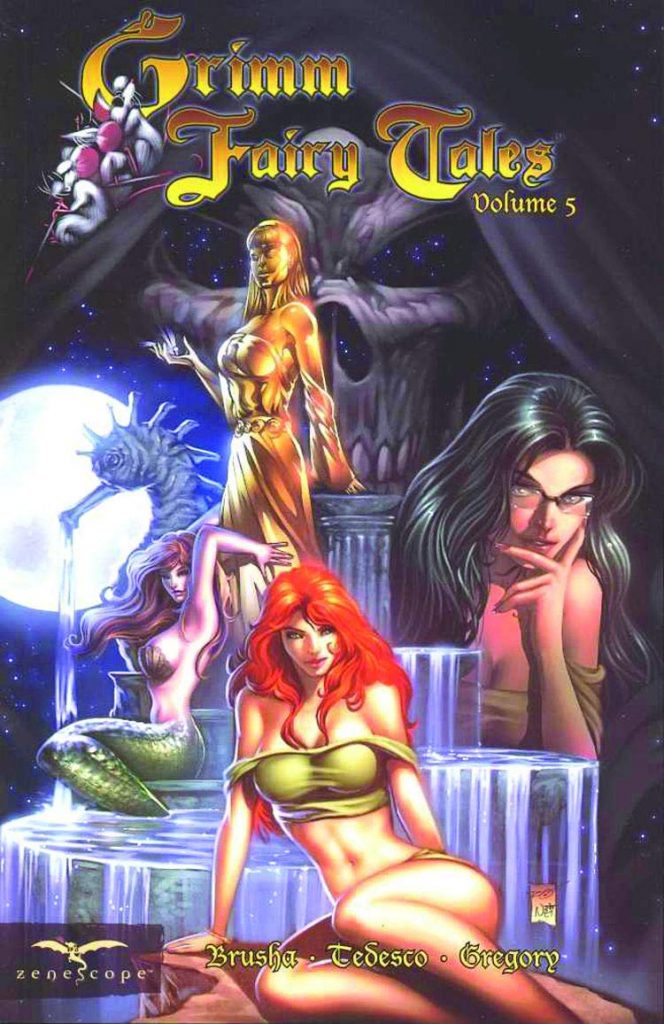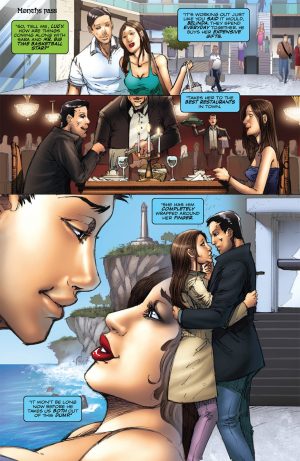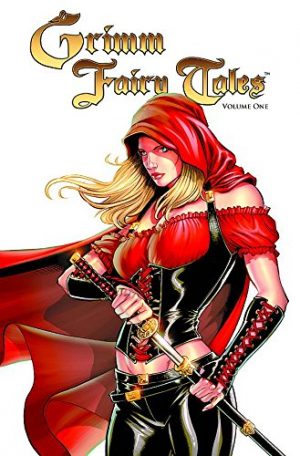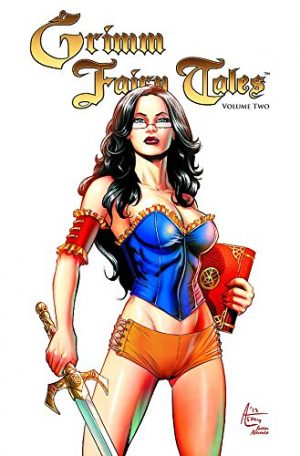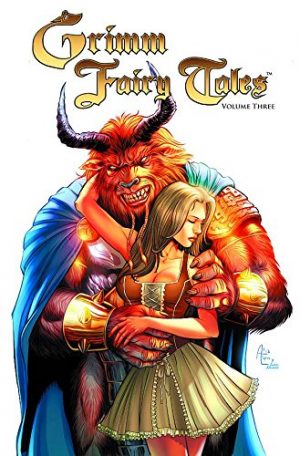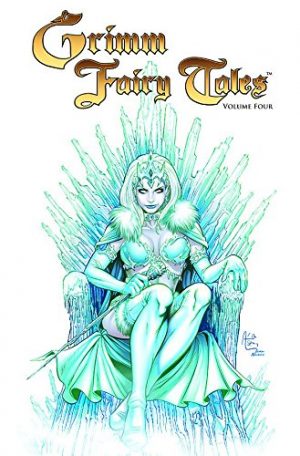Review by Frank Plowright
As there was a sea change to Grimm Fairy Tales in Volume Four, it’s only appropriate that this collection begins with the tale of the Little Mermaid reflecting modern life. Much of the previous volume seemed a backward step, discarding what worked in favour of an uninspired blending of fantasy and horror, but this selection gets the series back on track. In the original Little Mermaid the undersea princess sacrificed her identity for true love. The Grimm Fairy Tales version takes that as the starting point, but there is no fairy tale ending.
Unlike other two part stories in the series to date, both halves are drawn by Claudia Sepulveda, which is welcome. The art seems to be coloured over her pencil work, which really does her no favours because the definition and depth that ink lines would provide is absent, and errors that may have been tidied up in the inking instead remain. Dean Juliette is good with scenery and bringing animals to life, but his humans are awkwardly stiff, while artwork by Mauro and Jeff Zornow isn’t quite there either.
Over the previous volumes Sela Mathers attempted to prevent people from unleashing their worst instincts, but her counterpart Belinda positively encourages that, and it changes the tone of Grimm Fairy Tales. Before redemption was a possibility, but many of these stories resemble nothing so much as 1950s horror material which led to an often inventively plotted revenge. The writers here don’t match that quality, but the final two chapters have some spark.
Series co-creator Joe Bruscha has now dropped his Joe Tyler alias, but although credited for “story” along with co-creator Ralph Tedesco, that appears to be more in the general sense as there are different writers for each tale, with Bruscha playing no direct part. Tedesco co-writes a story of King Midas with Raven Gregory, and it’s the best in the book, surprising and horrific, and seemingly setting something up for the future. Gregory also writes a story herself and co-writes the opening two-parter with Linda Ly. Michael Dolce adapts ‘The Ugly Duckling’ to a high school nerd, but it’s too obvious. Gregory’s final chapter surprises, though, revisiting someone whose time seemed to have passed and looking at what happens if their attitude isn’t amended. It helps that Vic Drujniu’s art is the best in the book, creepy when needed, normal as normal can be otherwise, and with a hell of a lot of effort put into some montage pages.
There are no credits for the final short story, exclusive to this collection, but as previously it’s more a teaser than anything else, so of limited interest. This is an up and down collection. It’s an improvement on Volume Four, but there’s a frustrating lack of quality art with decent writing, and while the art is better than Volume One, it’s still a reset.
